No one would have believed, in the last years of the nineteenth century, that human affairs were being watched from the timeless worlds of space. No one could have dreamed that we were being scrutinised as someone with a microscope studies creatures that swarm and multiply in a drop of water. Few men even considered the possibility of life on other planets. And yet, across the gulf of space, minds immeasurably superior to ours regarded this earth with envious eyes, and slowly, and surely, they drew their plans against us...
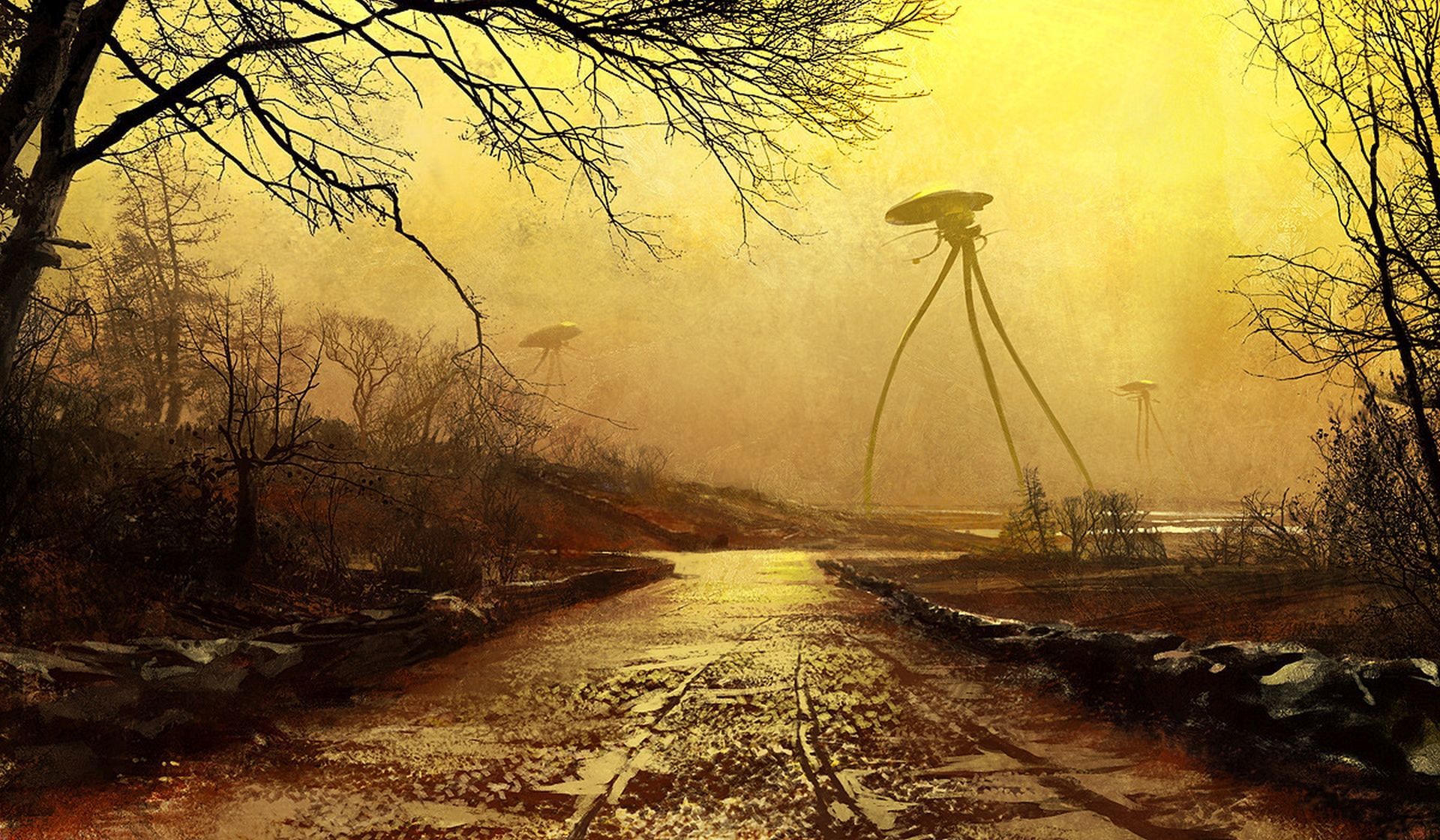
H. G. Wells moved to Woking in May 1895. His stay may have lasted less than 18 months, but whilst here he wrote some of his best-known works, giving Woking its claim to be the birthplace of modern science-fiction.
Of these, the story most closely associated with the town is 'The War of the Worlds'. The book was first published in 1898, and it hasn't been out of print since. Telling the tale of a terrifying Martian invasion, it is one of the earliest stories that details a conflict between mankind and an alien race.
This cache combines an old-fashioned Mystery puzzle with a new-style Geocaching Adventure that can be played with the Adventure Lab app on a smartphone:
>> The War of the Worlds <<
Completing the Geocaching Adventure on the app is optional - the locations and questions given there, are also given below - but the Journal entries, displayed for each correct answer, will save you a bit of maths!
Whether you use the app or not, you will need to solve the following puzzle and visit all of the locations to find the cache.
There is no need to visit the posted coordinates - they mark the spot where the statue of H. G. Wells stood before its move to Wells Plaza (see waypoint 3 of the Adventure, below).
The Puzzle
Can you find what links these images?
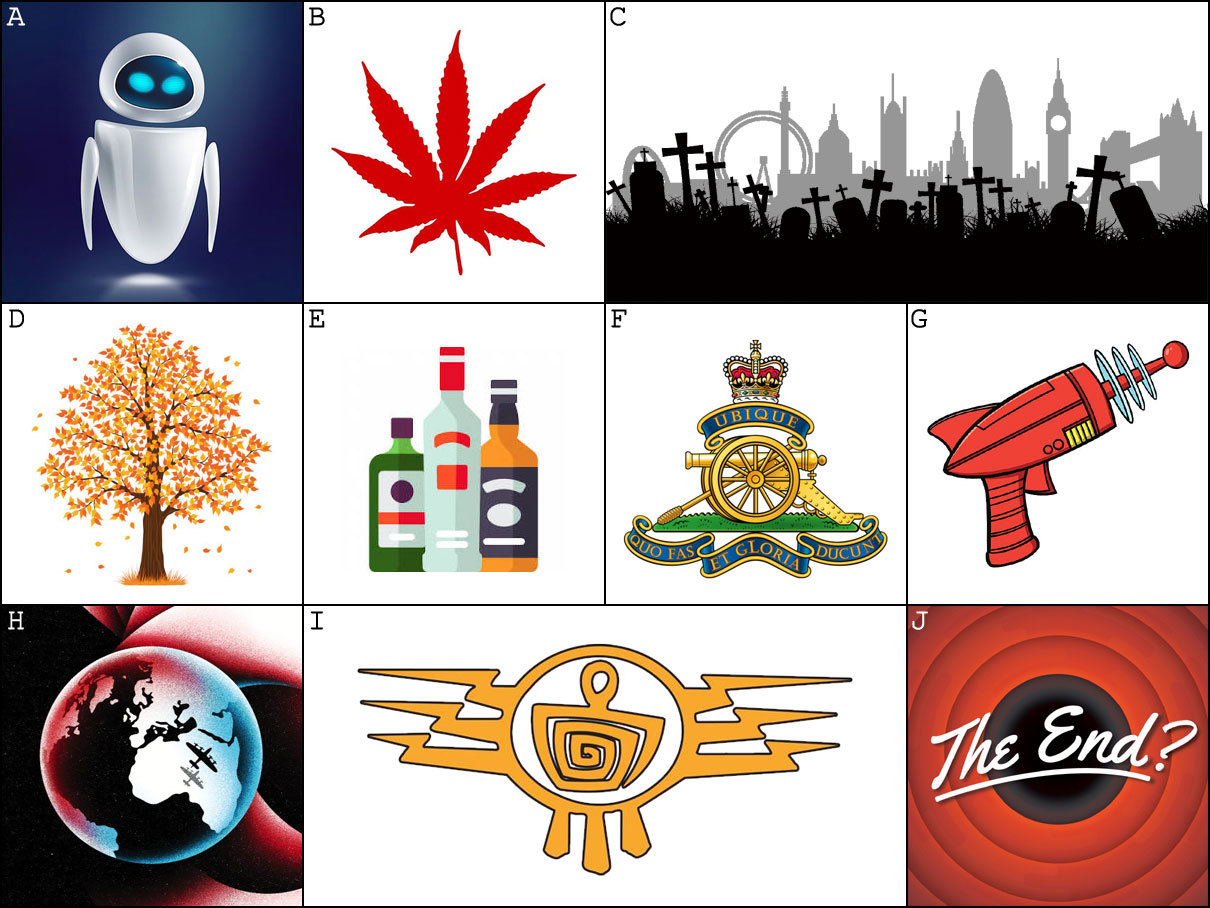
Each image will yield either a single numeric value or a pair of values. The values range from 1 to 12. For the pairs, the two values should be added together.
The start point for your search for the cache is:
N 51° MARTIAN W 0° LANDING
where MARTIAN = ((5 * A * B * C * D * E) + 640) / 1000
and LANDING = ((5 * F * G * H * I * J) + 1890) / 1000
(These coordinates can be verified using the checker, but you will need to complete the Adventure to find the final coordinates of the cache.)
The Adventure
This Geocaching Adventure takes you on a short tour of Woking Town Centre, pointing out some of the tributes to Wells and his novel, and then to the sandpit on Horsell Common - the site of the first Martian landing.
You will need to visit the following locations, and answer a question at each.
The values, V to Z are calculated by summing up the letters of the answer (e.g. "Woking" -> 23 + 15 + 11 + 9 + 14 + 7 = 79), and then taking the digital root (e.g. 79 -> 7 + 9 = 16 -> 1 + 6 = 7).
(If you're using the Adventure Lab app, the calculated value is given for a correct answer, in the Journal entry.)
1. Woking Town Gate (N 51° 19.207 W 0° 33.499)

Woking Town Gate was built in 1992 and stands by Christ Church in Jubilee Square. It incorporates symbols of Woking's past, including brickmaking, the Basingstoke canal, the railway, and parts of the Borough's coat of arms.
Naturally, there's also a Wellsian link, with the representation of a tentacled Martian from 'The War of the Worlds'.
[The Town Gate was designed by Alan Dawson.]
Question: The commemoration to a Woking military man mentions which English county? (V)
2. The Martian Tripod (N 51° 19.239 W 0° 33.421)
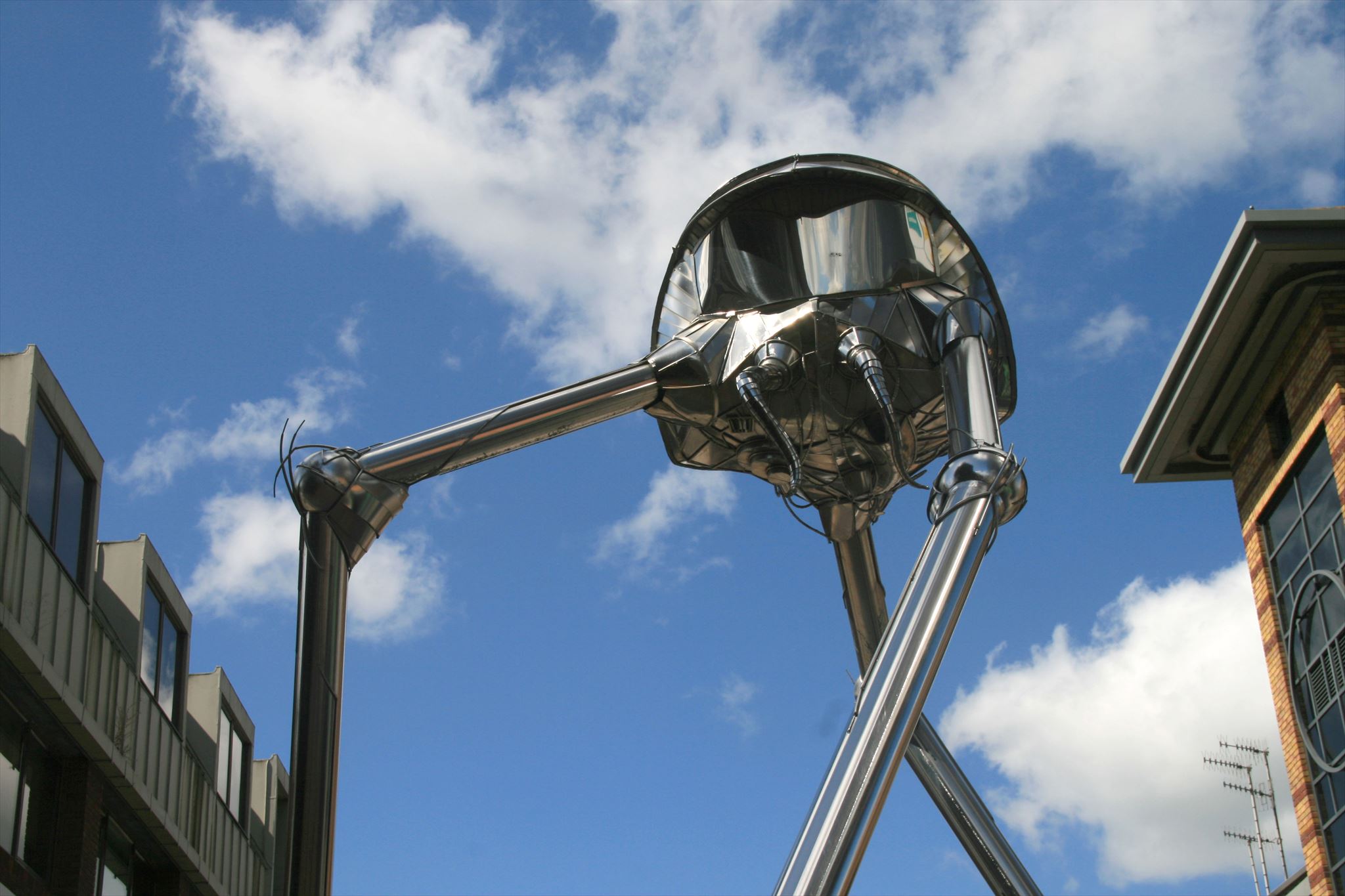
In 1998, to celebrate the centenary of the publication of the 'The War of the Worlds', a twenty-three feet high sculpture of a Martian fighting machine was erected in the town centre.
Nearby one of the cylinders that carried the Martians to Earth, can be seen ploughing into the ground. You can also see evidence of the bacteria that led to the Martians' demise, on the ground, and starting to climb one of the tripod's legs.
['The Martian' was designed and constructed by Michael Condron.]
Question: What was the surname of the public dignitary? (W)
3. H. G. Wells Statue (N 51° 19.283 W 0° 33.473)
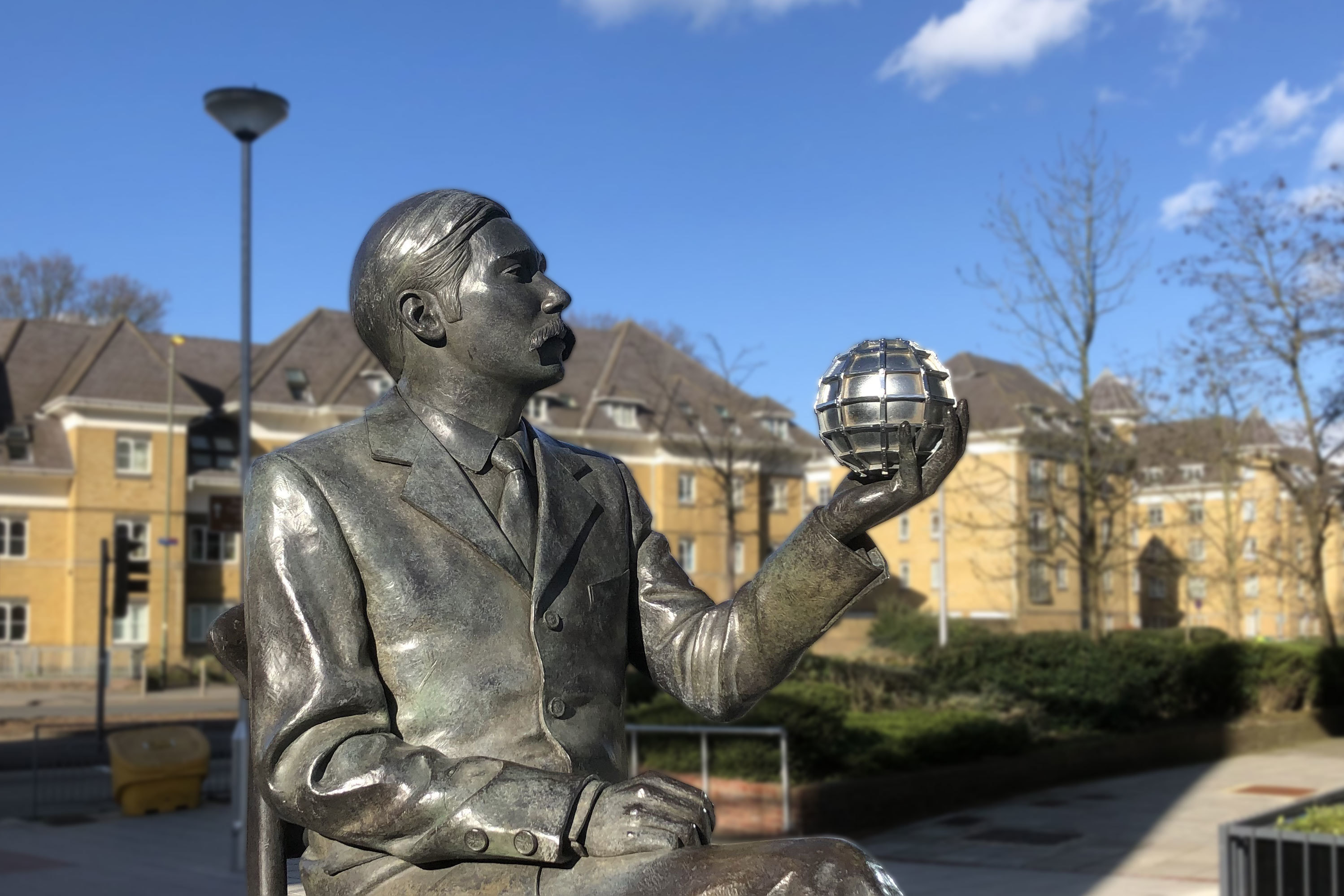
In 2016, to celebrate H. G. Wells’ 150th birthday, a seven feet tall bronze sculpture of the author was unveiled. Two years later it was moved to its permanent home, here at the newly established Wells Plaza.
The statue includes elements from some of his best-selling stories, including Martian red weed, from 'The War of the Worlds', creeping across the base...
['Novelist and Thinker' was designed by local artist, Wesley W. Harland.]
Question: The object in Wells' hand is made of which substance? (X)
4. The War of the Worlds Mural (N 51° 19.307 W 0° 33.474)
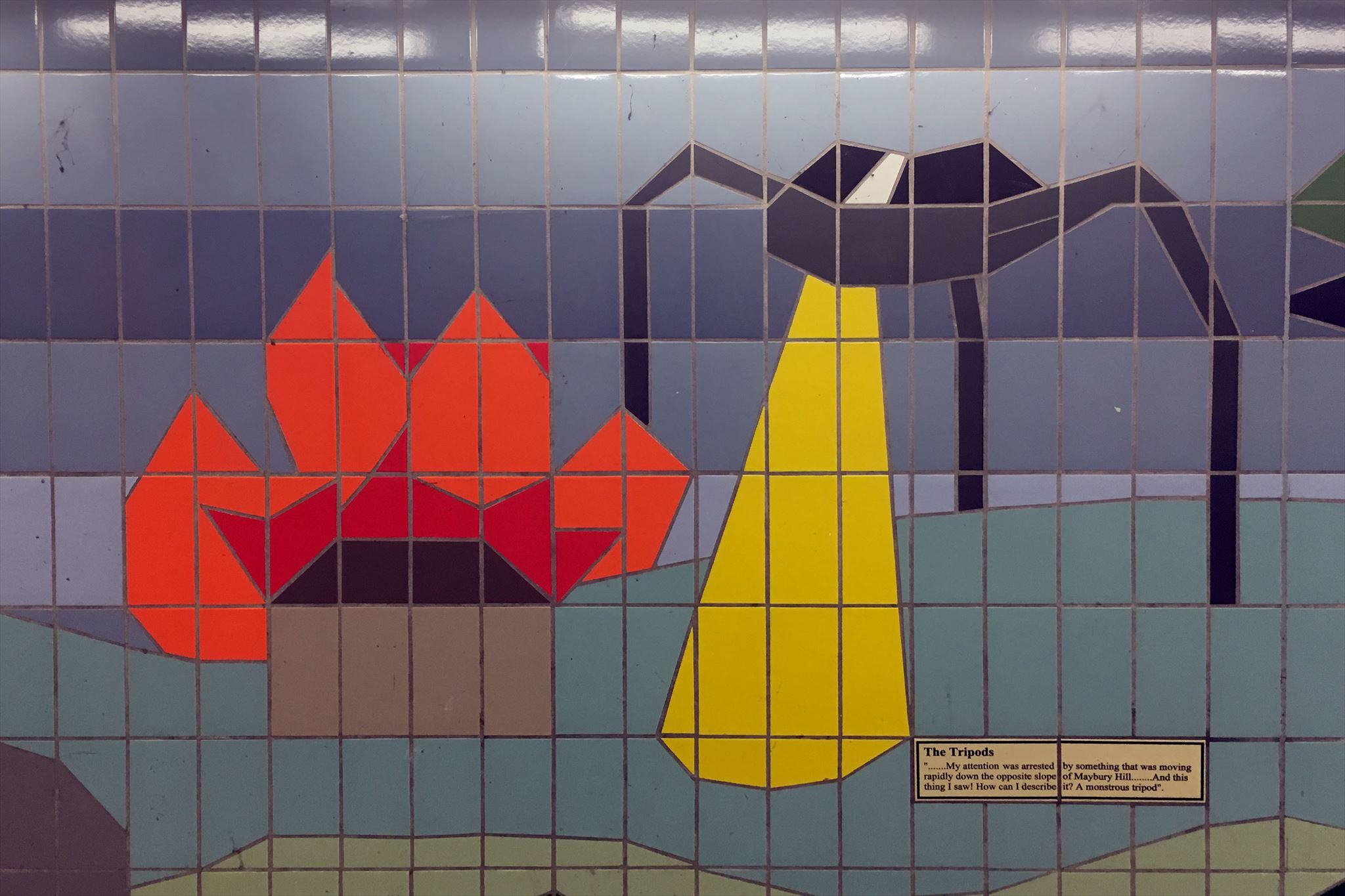
The centenary of the publication of the 'The War of the Worlds', was also celebrated with the installation of a tile mosaic mural in the subway under Victoria Way. (The coordinates are for the subway exit.)
The mural depicts the Martians landing on Horsell Common and the destruction of the town by the tripods. It shows a number of local landmarks including the Shah Jehan Mosque, Woking Orphanage and the Maybury Arch.
[The mural was commissioned by Woking Borough Council, but I haven't been able to find the name of the artist.]
Question: Which of Woking's public buildings (one word) was saved until last? (Y)
5. The Sandpit on Horsell Common (N 51° 20.234 W 0° 32.891)
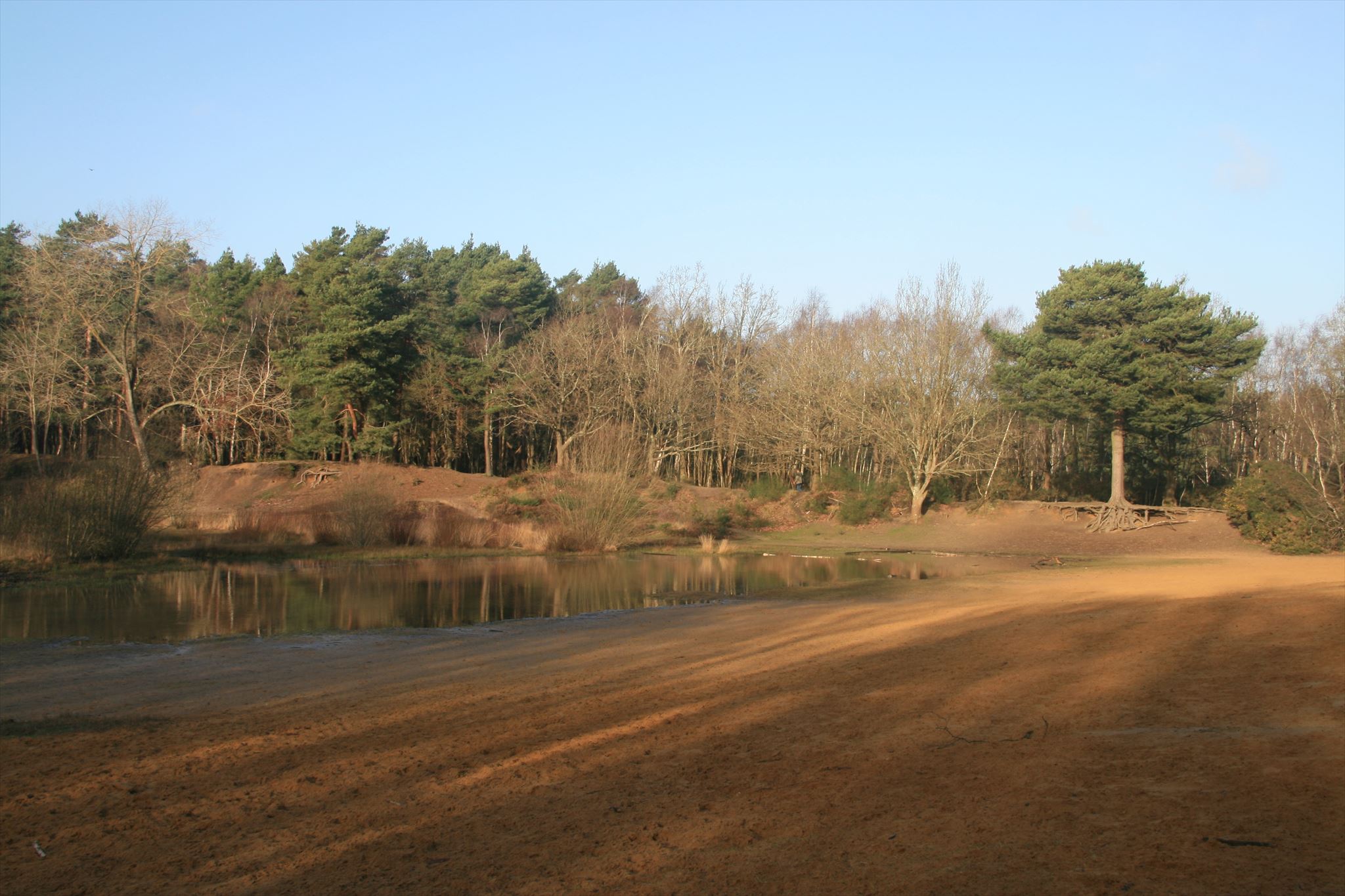
The final stop of our tour brings us to Horsell Common. It was here that the first Martian cylinder crashed to earth in the second chapter of the book.
The large sandpit, referred to locally as 'The Beach', is often depicted as the Martians' landing site - it's easy to imagine that the pond occupies the crater-like dent made by the impact.
[Horsell Common is managed by Horsell Common Preservation Society.]
Question: What's the third word inscribed on the bench carved from a tree trunk? (Z)
Parking / Walking Routes
This leaflet gives information on parking and walking routes between the town and Horsell Common, as well as highlighting a few of Woking's other Wellsian links, including his house and quite a number of pubs:
>> The Wells in Woking Heritage Trail <<
If you have time, you should stop off at the Muslim Burial Ground Peace Garden on Monument Road. This was originally opened in 1917, but beautifully restored in 2015. There is also a Wherigo cache nearby.
The Cache
We know that one Martian cylinder reached Woking - you've visited the spot on Horsell Common - but what if another also landed in the town ... and lay undiscovered for more than a century?
Taking an offset from the puzzle solution, you should look for Woking's second cylinder here:
N 51° MARTIAN - INVASION W 0° LANDING + SITE#2
where INVASION = ((10 * Y * Z) + 108) / 1000
and SITE#2 = ((10 * V * W * X) + 95) / 1000
(Be careful to subtract from the northings and add to the westings.)


 Congratulations on the FTF to 2ndEast and Ashtead Bushwhackers.
Congratulations on the FTF to 2ndEast and Ashtead Bushwhackers.